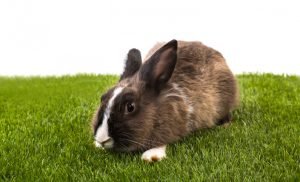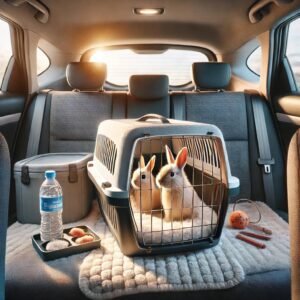Rabbits, also known as bunnies, have captured the hearts and minds of humans for centuries, serving as symbols of fertility, innocence, and luck. All breeds of domestic rabbits originate from the European rabbit (Oryctolagus cuniculus). These fascinating creatures have adapted to diverse habitats and played significant roles in our lives. Get ready to embark on a journey to discover the world of rabbits, their unique characteristics, intriguing behaviors, and the vital roles they play in the environment.
Short Summary
- Rabbits are small mammals belonging to the Lagomorpha and Leporidae families, adapted to various environments, with over 305 breeds bred for different purposes.
- Pet rabbits require a balanced diet of plant material supplemented by occasional fruits and treats. They have unique digestive systems that extract essential nutrients from fibrous food.
- Rabbits play an important role in their ecosystems by providing food sources for predators, dispersing seeds, controlling invasive plants, and burrowing activities. Responsible pet ownership is necessary to mitigate environmental problems caused by them.
Understanding Bunny Basics
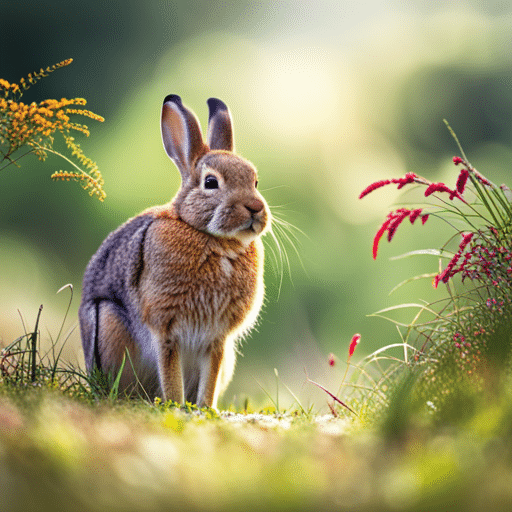
Rabbits, also known as bunny rabbits, are small mammals belonging to the order Lagomorpha and the family Leporidae, which also includes hares. Found all over the world except in Asia and Antarctica, rabbits come in various shapes and sizes, from tiny pygmy rabbits to massive Flemish giants. With powerful hind legs and long ears, rabbits have adapted to their environments and have become an essential part of many ecosystems.
Rabbits are known for their ability to reproduce quickly, with some species having up to 20 years of age.
Wild Rabbits
Wild rabbits, such as the European rabbit (Oryctolagus cuniculus), are native to North America, southwest Europe, Sumatra, Southeast Asia, and parts of Japan and Africa. They inhabit diverse environments, including meadows, woods, forests, grasslands, deserts, and wetlands. The genus Sylvilagus comprises thirteen species of wild rabbit, including seven varieties of cottontail.
These adaptable creatures have developed various strategies for evading predators, such as hopping in a zig-zag pattern, hiding in burrows, and using their long ears to detect predators. Wild rabbits play a crucial role in the ecosystem, providing food for various predators and helping maintain the balance of their habitats. Diseases like Myxomatosis and Calicivirus affect both wild and pet rabbits, and measures have been taken to control the wild rabbit population by introducing these diseases into Australia to reduce pest rabbit numbers.
Domestic Rabbits
Domestic rabbits have a rich history that dates back to ancient Rome, where rabbit domestication began. The European rabbit (Oryctolagus cuniculus) is the ancestor of numerous domestic rabbit breeds, including the Dutch, Belgian, and Angora rabbits. Today, there are over 305 recognized rabbit breeds.
Domestic rabbits have been bred for various purposes, such as pets, meat, and fur. Rabbit fur has been used to manufacture clothing items like coats, hats, and blankets, while rabbit meat is a popular source of protein.
Wild and domestic rabbits, like their wild counterparts, also play a role in the ecosystem and contribute to the balance of the environment.
Pet Rabbits
Pet rabbits have become a beloved companion to many people. It is estimated that around 3,000,000 pet rabbits are living in the US and 900,000 in the UK. These adorable companions require proper care and attention to ensure their happiness and well-being, just like most rabbits do.
When introducing pet rabbits to a home with other pets, such as dogs and cats, it is crucial to ensure their safety, as these animals may have natural hunting instincts that could endanger the rabbit.
Here are some key aspects of caring for a pet rabbit.
- Providing a safe and comfortable environment
- Offering a balanced diet
- Regular exercise and mental stimulation
- Grooming and hygiene
- Veterinary care and vaccinations
By following these guidelines, you can ensure that your pet rabbit lives a happy and healthy life.
Social interaction is also vital for pet rabbits, as they are social animals that thrive on companionship. Rabbits can develop strong bonds with their owners and even be trained to perform simple tasks, such as coming when called. Understanding and catering to a pet rabbit’s needs is essential for fostering a healthy relationship between the owner and the rabbit.
Bunny Nutrition: What Do Rabbits Eat?
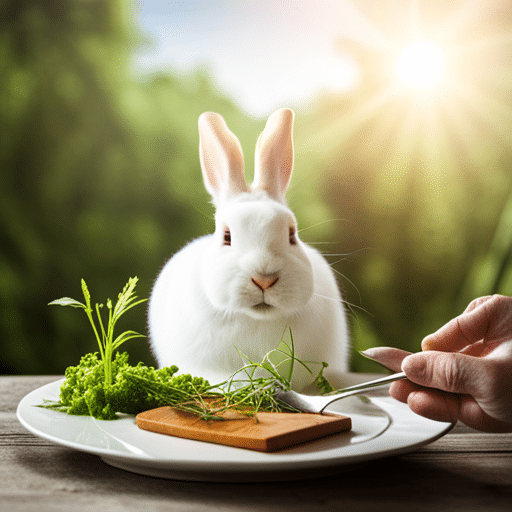
A healthy diet is crucial for a rabbit’s well-being. Rabbits primarily consume plant material, such as grasses, greens, and occasionally fruits and treats. Their unique digestive system, involving a process called hindgut fermentation, allows them to extract essential nutrients from their food.
Let’s take a closer look at the dietary components that contribute to a rabbit’s overall health.
Grasses and Greens
Grasses and greens are an essential part of a rabbit’s diet, providing vital vitamins, minerals, and fiber to keep them healthy. Examples of appropriate grasses and greens for rabbits include:
- Timothy hay
- Oat hay
- Orchard grass
- Dandelion greens
These fresh, pesticide-free foods should be fed in moderation and as part of a balanced diet to ensure optimal health and well-being.
Fruits and Treats
Fruits and treats can be a delicious addition to a rabbit’s diet, offering essential vitamins and minerals when given in moderation. Some suitable fruits and treats for rabbits include:
- Apples
- Bananas
- Blueberries
- Carrots
- Celery
- Strawberries
It is essential to monitor a rabbit’s weight and ensure they do not become overweight due to excessive sugar intake from fruits and treats.
Unique Digestive System
The rabbit’s digestive system is specialized to process plant material efficiently. Hindgut fermentation allows rabbits to break down fibrous plant material in their large intestine and colon, extracting valuable nutrients.
The consumption of their droppings is an essential part of a rabbit’s digestive process, enabling them to further digest their food and obtain necessary nutrients.
Rabbit Reproduction and Lifespan
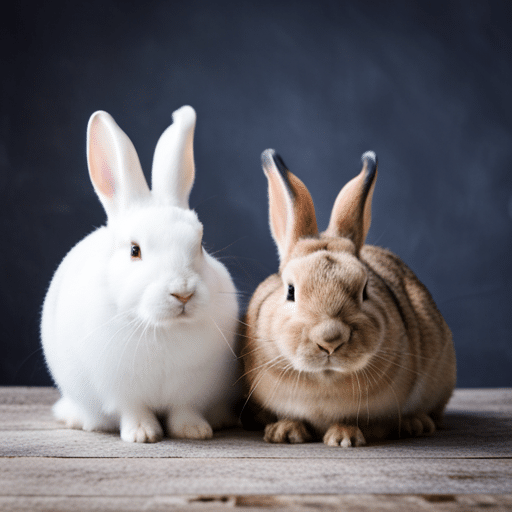
Rabbits are prolific breeders, with a gestation period of approximately 30 days and an average of five offspring per pregnancy. Baby rabbits, also known as kits or kittens, are born blind and furless, becoming self-sufficient after about three weeks. The average lifespan of a wild rabbit is one to two years, while pet rabbits can live between 8 to 10 years, and in some cases, even longer.
Let’s delve deeper into the fascinating world of rabbit reproduction and lifespan.
Breeding Habits
Rabbit reproduction involves mating behaviors and a gestation period of approximately 30 days. During this time, the female rabbit, or doe, carries her developing offspring and prepares for their birth. Rabbits can breed three to four times annually, depending on the availability of resources and the environmental conditions.
The mating behaviors of rabbits are intricate and complex, with dominant and subordinate rabbits forming social hierarchies that dictate access to breeding sites and resources. Mating rituals include chasing, boxing, and even nipping among potential partners.
Understanding rabbit reproduction can provide valuable insights into the behaviors and social dynamics of these fascinating creatures.
Baby Rabbits
Newborn rabbits, or kits, are born blind and furless, entirely dependent on their mother for warmth and nourishment. Within a few weeks, kits develop fur, open their eyes, and begin to explore their surroundings. By the time they are six weeks old, they are typically weaned and prepared to start families of their own.
It is essential to understand the needs and development of baby rabbits to ensure their proper care and growth.
Lifespan
The average lifespan of a rabbit varies greatly depending on whether it lives in the wild or captivity. Wild rabbits, such as the eastern cottontail, typically have a short life expectancy of less than one year due to predation and environmental factors.
In contrast, pet rabbits can live between 8 to 10 years, with some individuals living even longer. Providing a pet rabbit with a healthy diet, proper care, and a safe environment can contribute significantly to a long and happy life.
The World of Rabbit Species

There are numerous world rabbit species found across the globe, each with unique adaptations to their specific environments. Some of these species include:
- European rabbit: the most widely recognized species and the ancestor of domestic rabbit breeds
- Cottontail rabbits: known for their fluffy white tails
- Amami rabbit: an endangered species found only on the Amami Islands in Japan
These different rabbit species, including female rabbits, showcase the diversity and adaptability of these small mammals.
Let’s take a closer look at some of these intriguing rabbit species.
European Rabbit
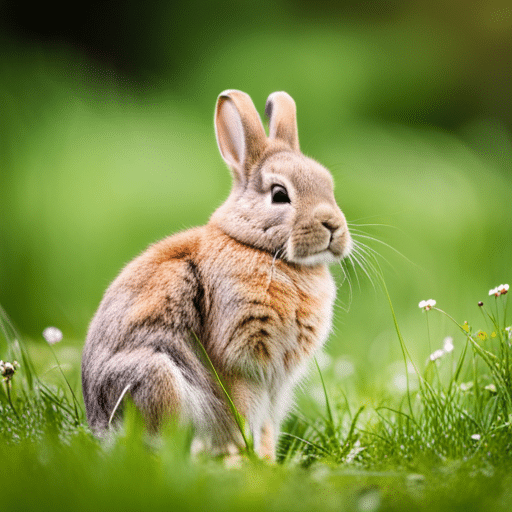
The European rabbit (Oryctolagus cuniculus) is native to western and central Europe and is the progenitor of numerous domestic rabbit breeds. These rabbits, including male rabbits, prefer open landscapes like fields, meadows, and grasslands and live in complex burrow systems called warrens.
The European rabbit’s social structure, adaptability, and reproductive success have allowed it to thrive and become a keystone species in many ecosystems.
Cottontail Rabbits
Cottontail rabbits (Sylvilagus floridanus) are native to North and South America and can be found in various habitats, including urban and suburban areas. These rabbits are known for their distinct white, fluffy “cottontail” and their ability to quickly adapt to different environments.
There are thirteen species within the genus Sylvilagus, including seven varieties of cottontail. Cottontails play an essential role in their ecosystems, providing food for predators and helping to maintain vegetation balance.
Endangered Rabbit Species
Several rabbit species are currently endangered or threatened due to various factors, including rabbit hemorrhagic disease, such as:
- The riverine rabbit of South Africa
- The volcano rabbit
- The Amami rabbit
- The Sumatran striped rabbit
These species face numerous challenges, such as habitat loss, hunting, and disease.
Conservation efforts, including habitat protection, captive breeding programs, and reintroduction of species into the wild, are crucial to ensure the survival and recovery of these unique and vulnerable rabbit species.
Bunny Behavior and Communication
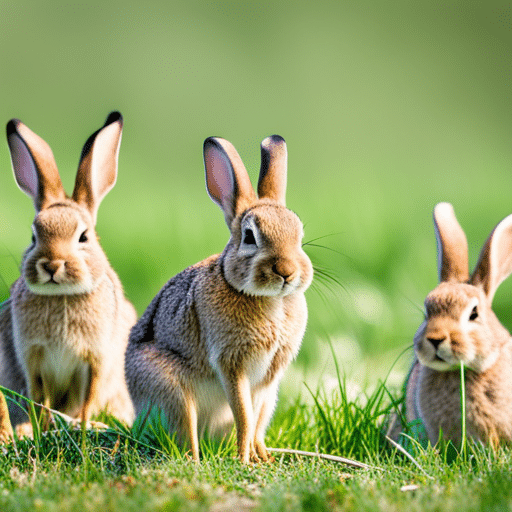
Rabbits are complex creatures with a wide range of behaviors and communication methods. Their social interactions, body language, and vocalizations provide insights into their emotions, intentions, and needs.
Understanding rabbit behavior and communication can help foster a better relationship between humans and rabbits, whether as pets or in the wild.
Social Interactions
Rabbits are social animals that thrive on companionship and interaction, whether it be with other rabbits or humans. They live in family groups and establish intricate social hierarchies, with dominant rabbits enjoying access to the most desirable resources and subordinates frequently denied access.
Rabbits are also known to form strong bonds with humans, responding to affection and even being capable of simple training, such as coming when called.
Body Language
Rabbits communicate through body language, using various postures, ear positions, and tail movements to convey their emotions and intentions. For example, when a rabbit is alert, its ears will be directed forward, while a relaxed rabbit will lay its ears back.
Tail movements, such as twitching and thumping, can indicate warning or fear, while wagging signifies a relaxed state. Understanding a rabbit’s body language can help humans better interpret their emotions and respond appropriately.
Vocalizations
Rabbits are capable of producing a variety of vocalizations to communicate with one another and express their emotions. These sounds include:
- Whining
- Honking
- Sighing
- Snorting
- Grunting
- Muttering
- Hissing
- Growling
- Clucking
- Humming
Each vocalization signifies a specific emotion or intention, such as distress, excitement, contentment, fear, aggression, annoyance, warning, anger, pleasure, or relaxation.
Recognizing and understanding these sounds can help humans better care for and interact with rabbits.
The Impact of Rabbits on the Environment
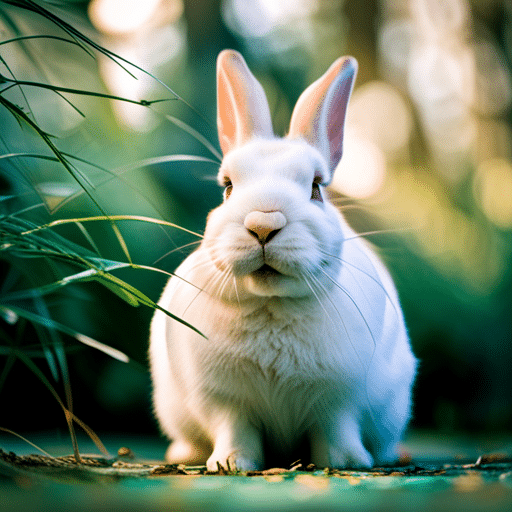
Rabbits play a significant role in their ecosystems, providing both benefits and challenges. They contribute to the balance of their habitats by serving as a food source for predators, dispersing seeds, and aerating the soil.
On the other hand, rabbits can also cause substantial damage to crops and natural habitats due to their voracious appetites and high reproductive rates.
Ecosystem Benefits
Rabbits provide numerous benefits to ecosystems. They serve as a crucial food source for various predators, such as foxes, birds of prey, and snakes, helping to maintain the balance of the food chain. Additionally, rabbits contribute to the health of grasslands by consuming and controlling the growth of invasive plants.
Their burrowing activities help to aerate the soil, promoting the growth of vegetation and providing habitats for other small animals.
Environmental Problems
Despite their benefits, rabbits can also pose challenges to the environment. Their prolific breeding and voracious appetites can lead to overgrazing, damaging crops and natural habitats. Invasive rabbit species can outcompete native species for resources, disrupting the balance of the ecosystem.
Controlling rabbit populations through responsible pet ownership, habitat protection, and conservation efforts is essential to minimize their negative impacts on the environment.
Rabbit Uses and Cultural Significance
Throughout history, rabbits have been used by humans for various purposes, such as food, and clothing, and as symbols in folklore and popular culture. Their versatile nature and attractive appearance have made them a favorite subject in literature and art, as well as a treasured companion for countless pet owners.
Food and Clothing
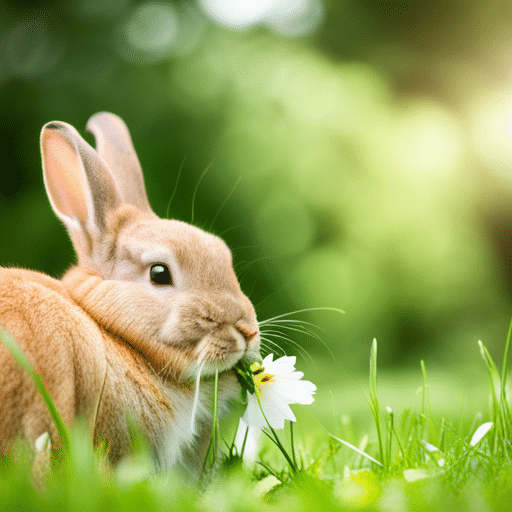
Rabbits have been used for:
- food
- clothing
- fur employed in the manufacture of coats, hats, and other garments
- meat, which is a popular source of lean protein
Rabbit farming and hunting have been practiced since the Middle Ages, as people recognized the value of rabbit meat and fur for sustenance and warmth.
Today, rabbits are still widely used for their meat and fur and are kept as pets.
Symbolism and Folklore
Rabbits hold a special place in various mythologies and folklore, often symbolizing fertility, luck, and rebirth. They have been associated with:
- Spring and Easter as the Easter Bunny
- Sympathetic characters in contemporary children’s stories
- The “lucky” rabbit’s foot is a symbol of good fortune
- The Playboy Bunny exemplifies the juxtaposition of prolific breeding and innocence.
Rabbits continue to captivate and inspire, leaving their mark on human culture and imagination.
Summary
Rabbits are fascinating creatures that have captured our hearts and minds for centuries. From their diverse habitats and unique adaptations to their complex social behaviors and intricate communication methods, rabbits continue to intrigue and charm us. As we learn more about these remarkable animals, we are reminded of the importance of protecting their habitats and preserving their natural balance within the ecosystem. Whether as companions or symbols of cultural significance, rabbits will undoubtedly continue to delight and inspire generations to come.
Frequently Asked Questions
Can I call my girlfriend Bunny?
Bunny is an endearing nickname that can be used in a relationship, however, it may not be appropriate for every couple.
Consider if the nickname works for you both before using it.
What does bunny mean in a relationship?
Bunny is a slang term used to describe an attractive young woman. It is commonly used in casual conversations.
What’s the difference between a rabbit and a bunny?
The main difference between a bunny and a rabbit is their age: bunnies are usually baby or young rabbits, while rabbits are adults.
Additionally, you can remember the difference by noting that both “bunny” and “baby” begin with the same letter.
What are 5 facts about rabbits?
Rabbits have an excellent sense of vision and hearing, live in complex social groups, practice paternal care, are known to be stubborn learners, and can jump up to 36 inches in height.
Rabbits are incredibly versatile animals, and their unique abilities make them great pets for many households. They are relatively low maintenance, and their intelligence and social nature make them great companions. They are also relatively easy to train and can be taught various tricks.
Do rabbits like to cuddle?
Yes, rabbits love to cuddle! They enjoy spending time with their human companions and being petted. However, it is important to approach your rabbit slowly and allow them to get used to being touched before attempting to cuddle. Also, remember that some rabbits may not enjoy being handled and should be respected.
What is the main component of a rabbit’s diet?
Rabbits should be fed mainly grasses and forbs, as these form the main component of their diet.
In addition to grasses and forbs, rabbits can also benefit from a variety of other plant-based foods, such as vegetables, fruits, and herbs. These should be fed in moderation.

